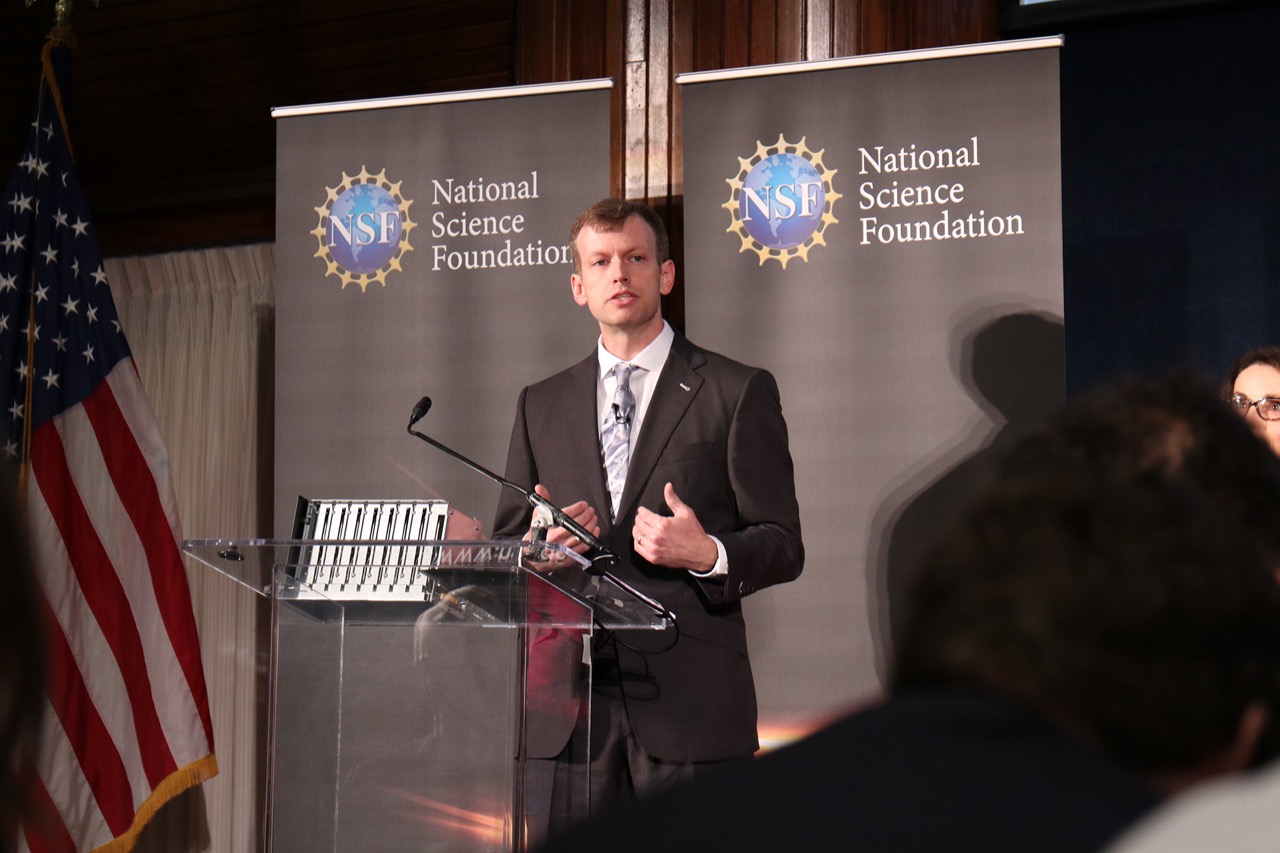University of Arizona researchers revel as photo of black hole unveiled
Cronkite News
WASHINGTON – They said they had “seen the unseeable,” and when astronomers Wednesday unveiled the first-ever pictures of a black hole deep in space, the audience erupted in applause.
“It was incredibly exciting,” to be there when the image was captured, said Lia Medeiros, one of the University of Arizona researchers in the years-long project that synchronized telescopes around the world for a shot of what had only been a theory before.
“We all got together in a room, everybody had their laptops and we all pressed the button together,” Medeiros said. “The first time anyone actually got an image that looked like something we were all super excited, everyone huddled around the laptop.”
What they saw was an image of the black hole in Messier 87, a galaxy 55 million light years from Earth in Virgo, captured after years of work by the Event Horizon Telescope team, which involved hundreds of people and eight synchronized radio observatories.


UA graduate student Junhan Kim traveled to Antarctica to help set up hardware that synchronized the telescope there with the others. “I went to the South Pole four times,” Kim said. “We needed a specialized instrument for the South Pole telescope to join (the others) … and that instrument is my thesis instrument, I built it.” Even with the hardware functioning, and no glitches, the project needed good weather at the same time on four continents to work. The team then had the challenge of storing the data, which totaled five petabytes. One petabyte is the equivalent of 1,000 terabytes. Marrone said amount of data collected by the project is the same as 5,000 years of MP3 files or “all of the selfies that 40,000 people will take in their lifetime.”Of the 11 observatories planned for the Event Horizon Telescope array, 8 participated in #EHTblackhole observations in 2017. Here is a collage (with older photos!) from the #NSFfunded animation made at @saoastro, to be found on our Youtube channel -- https://t.co/U37EF3IlTI. pic.twitter.com/9UUrynnmvD
— Event Horizon 'Scope (@ehtelescope) April 8, 2019
When the project first started, Psaltis said, there was no way to store that much data. “Five years ago you couldn’t store five petabytes worth of data,” he said. “We had a very big appetite … and thankfully technology evolved as quickly as we could do it.” Even then, the photo had to be assembled from those petabytes of data and made small enough to process into the picture unveiled Wednesday. “We have seen what we thought was unseeable,” Doeleman said. “We have seen, and taken a picture, of a black hole.” Chi-Kwan Chan, a UA astronomer who was involved in computing infrastructure and image reconstruction for the project, said “there were many nights without sleep” during the project. But he said the work has just begun. “A lot of science will come out of it,” Chan said. “This is only the beginning. With our data, when we dive more into them, we will learn a lot more about the black hole, especially the magnetic fields.” Psaltis echoed Chan, saying “this is where the fun starts.” “I think because this (image) is the first thing that we saw, we only paid attention to the things we were very careful and positive about,” he said. “I’m looking forward to go deeper into the details now and to look for the unexpected.” For more stories from Cronkite News, visit cronkitenews.azpbs.org. This story originally appeared on Cronkite News and is published via a Creative Commons license. Cronkite News is produced by the Walter Cronkite School of Journalism and Mass Communication at Arizona State University.Scientists have obtained the first image of a black hole, using Event Horizon Telescope observations of the center of the galaxy M87. The image shows a bright ring formed as light bends in the intense gravity around a black hole that is 6.5 billion times more massive than the Sun pic.twitter.com/AymXilKhKe
— Event Horizon 'Scope (@ehtelescope) April 10, 2019
Join the Conversation

